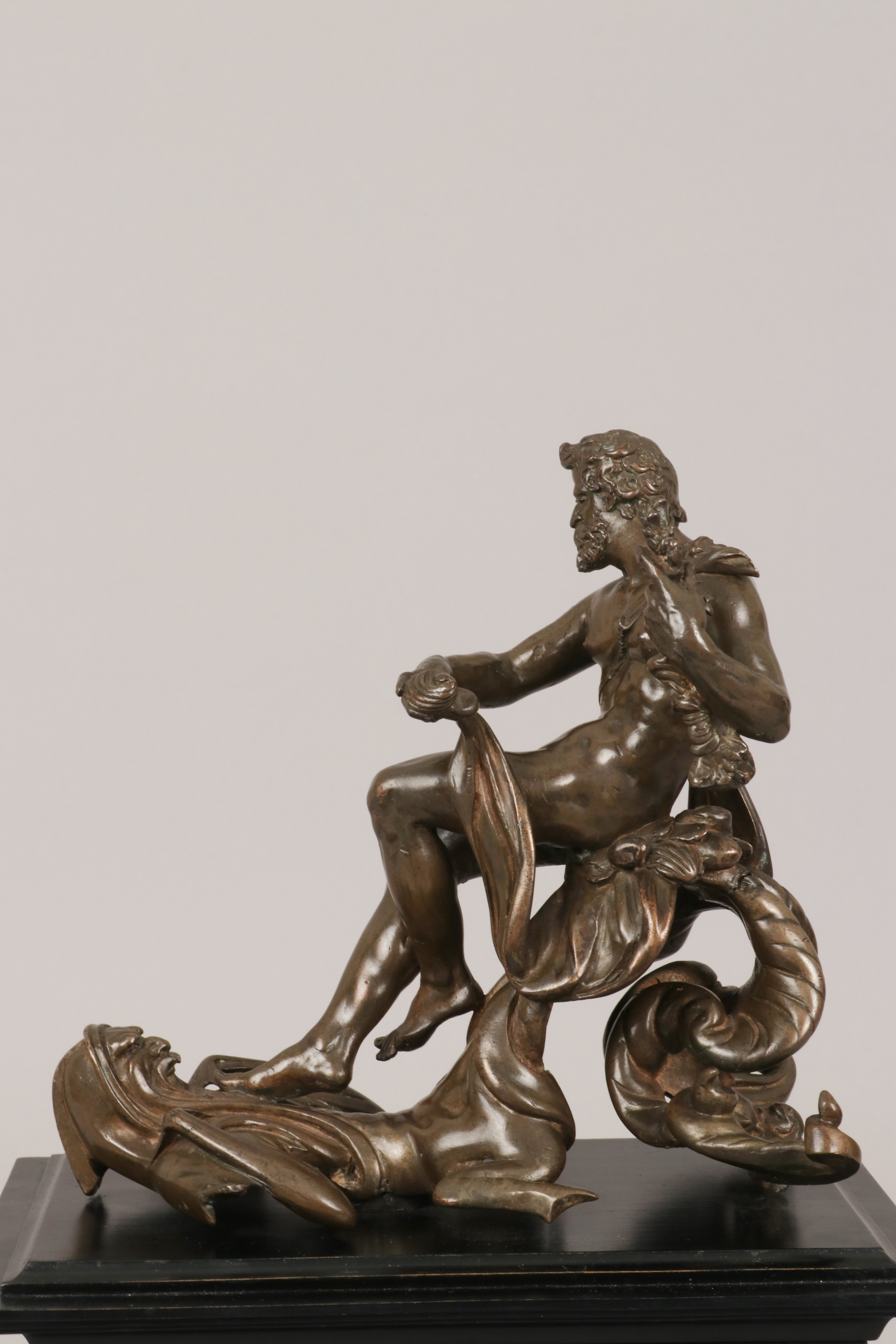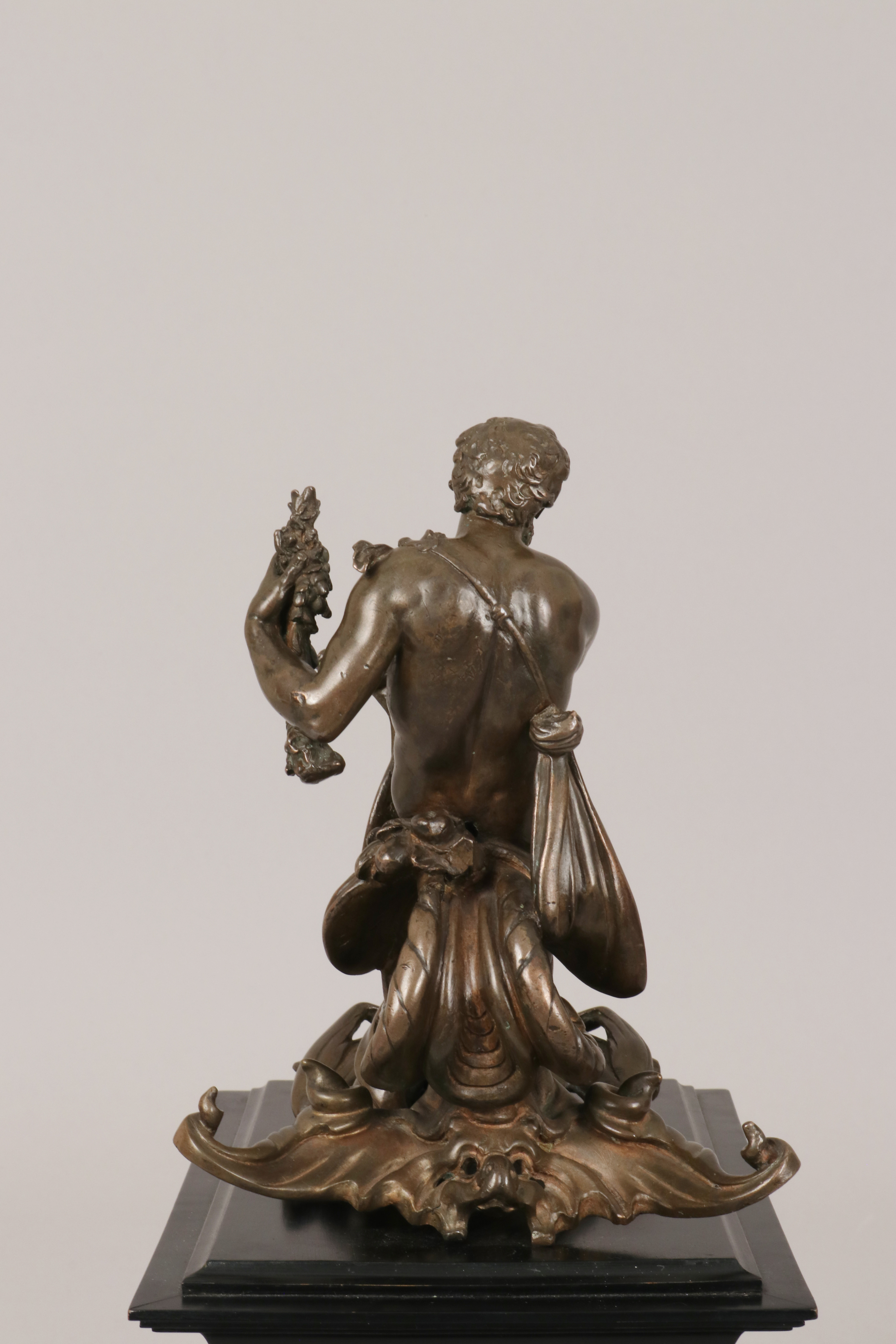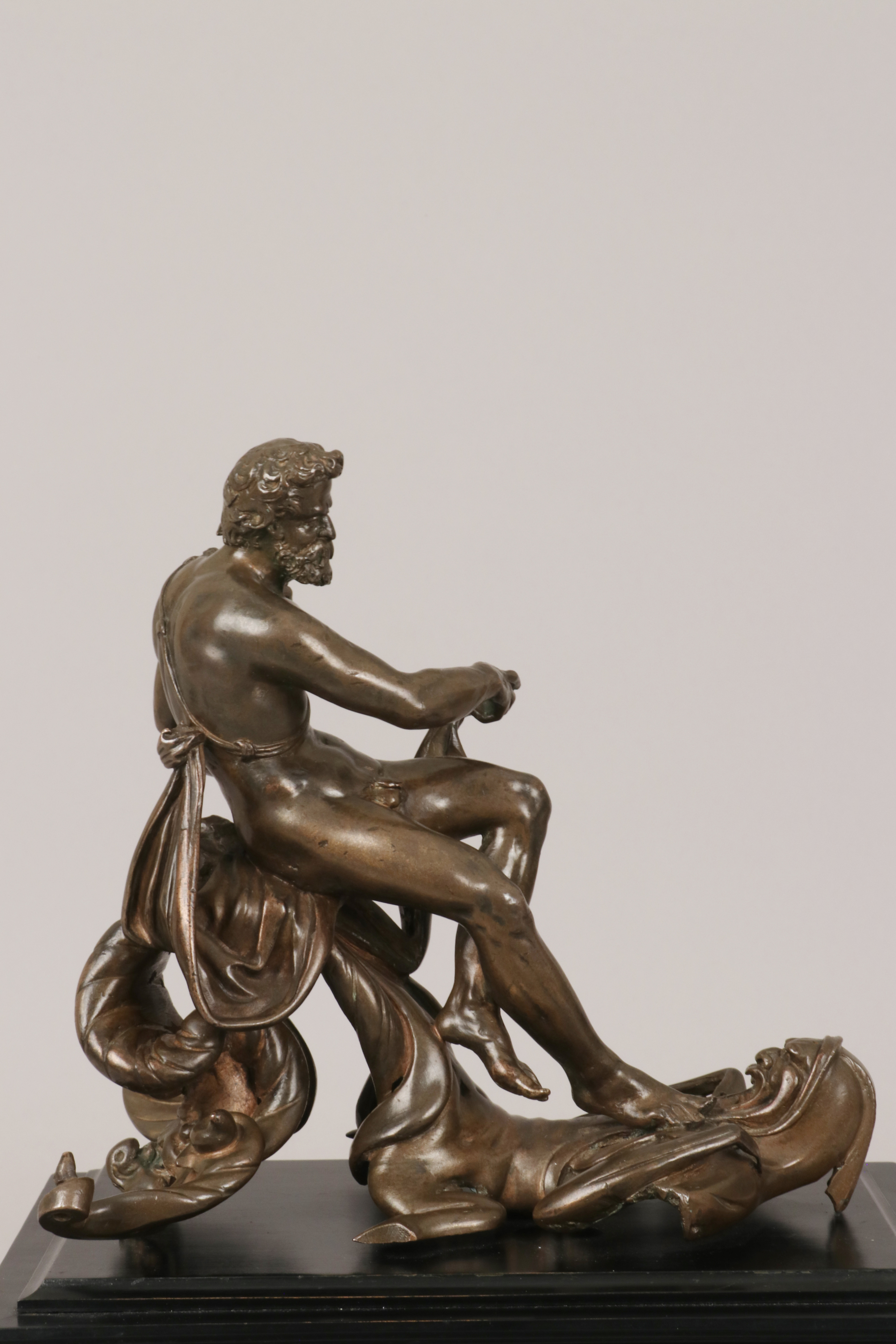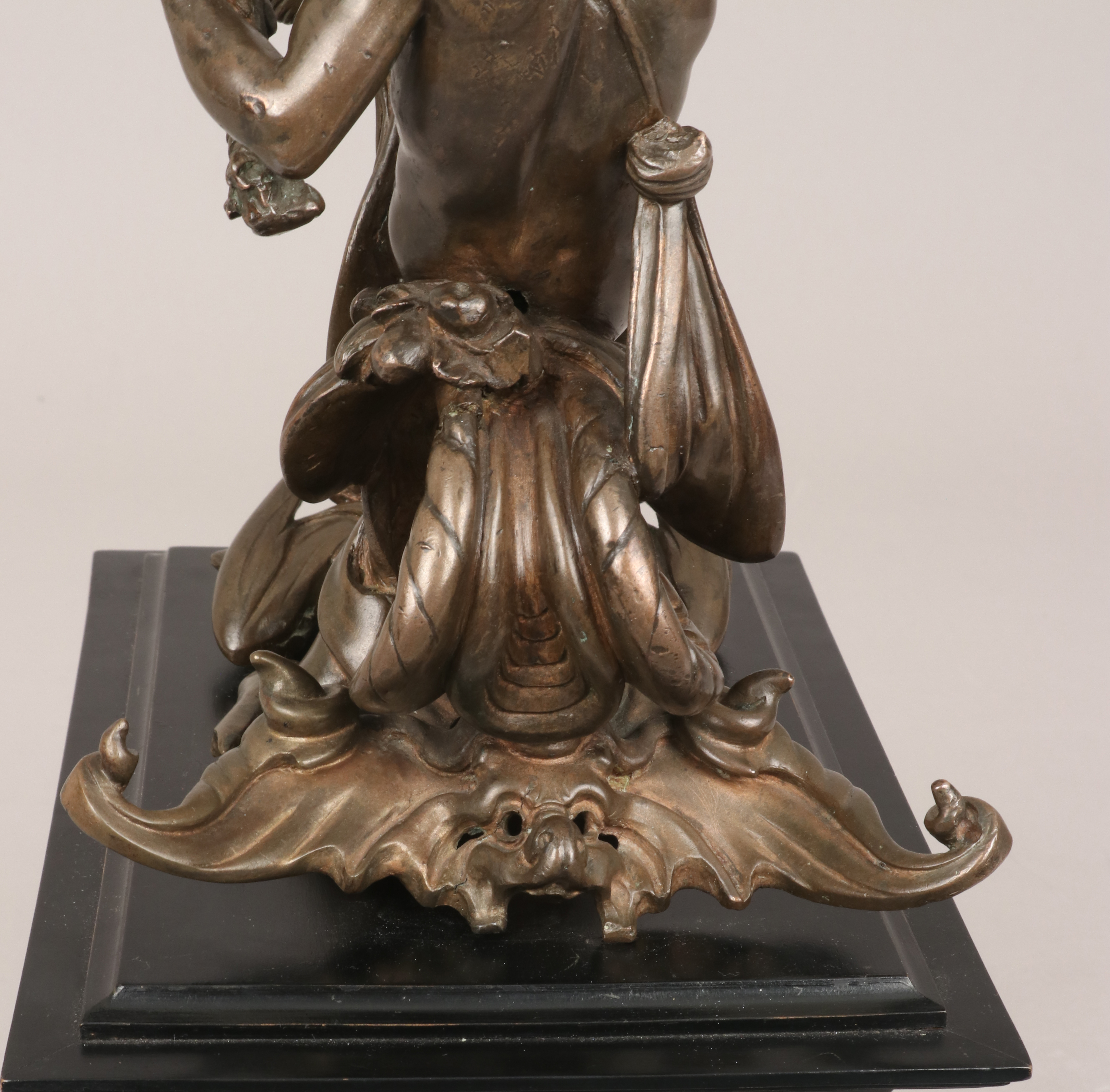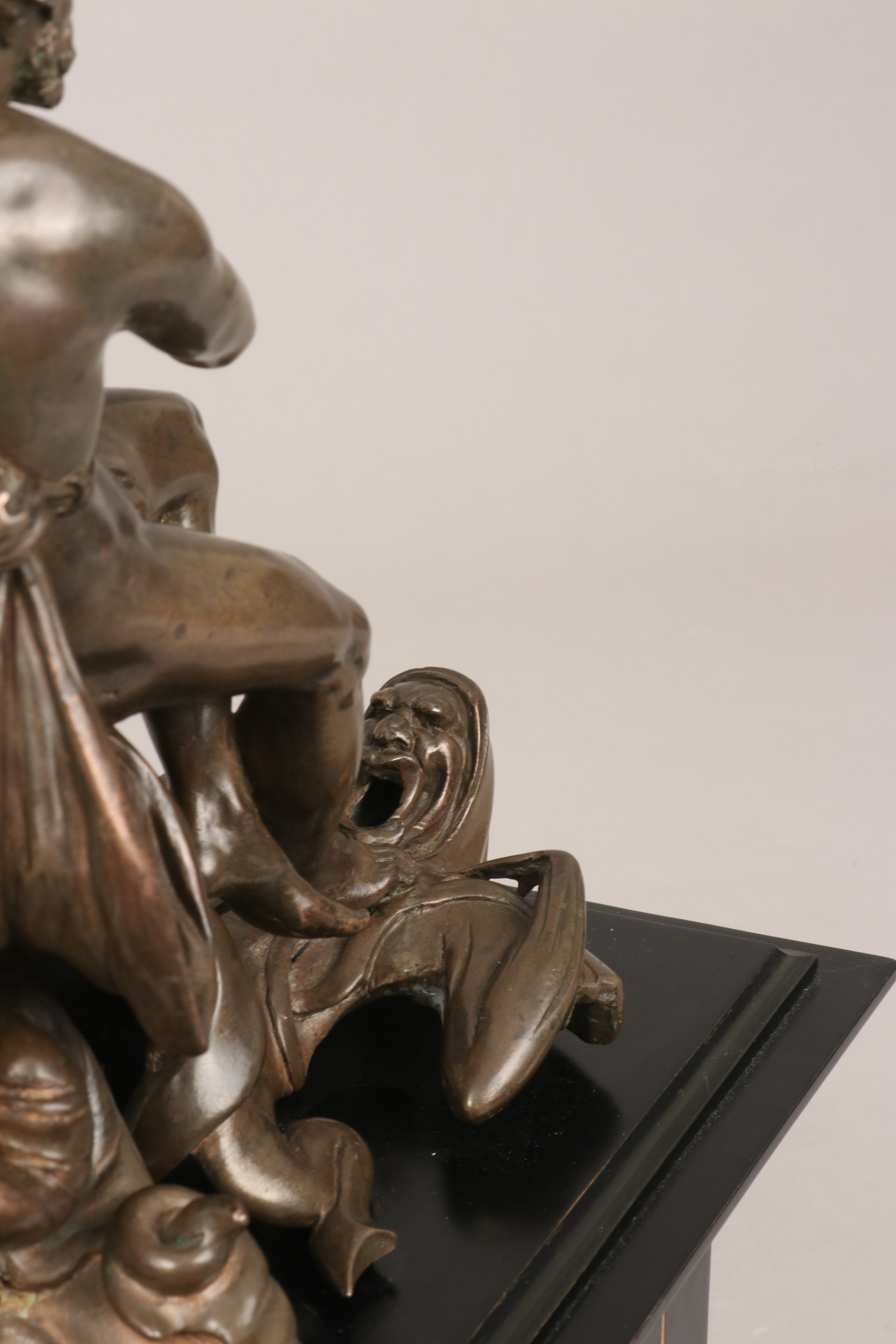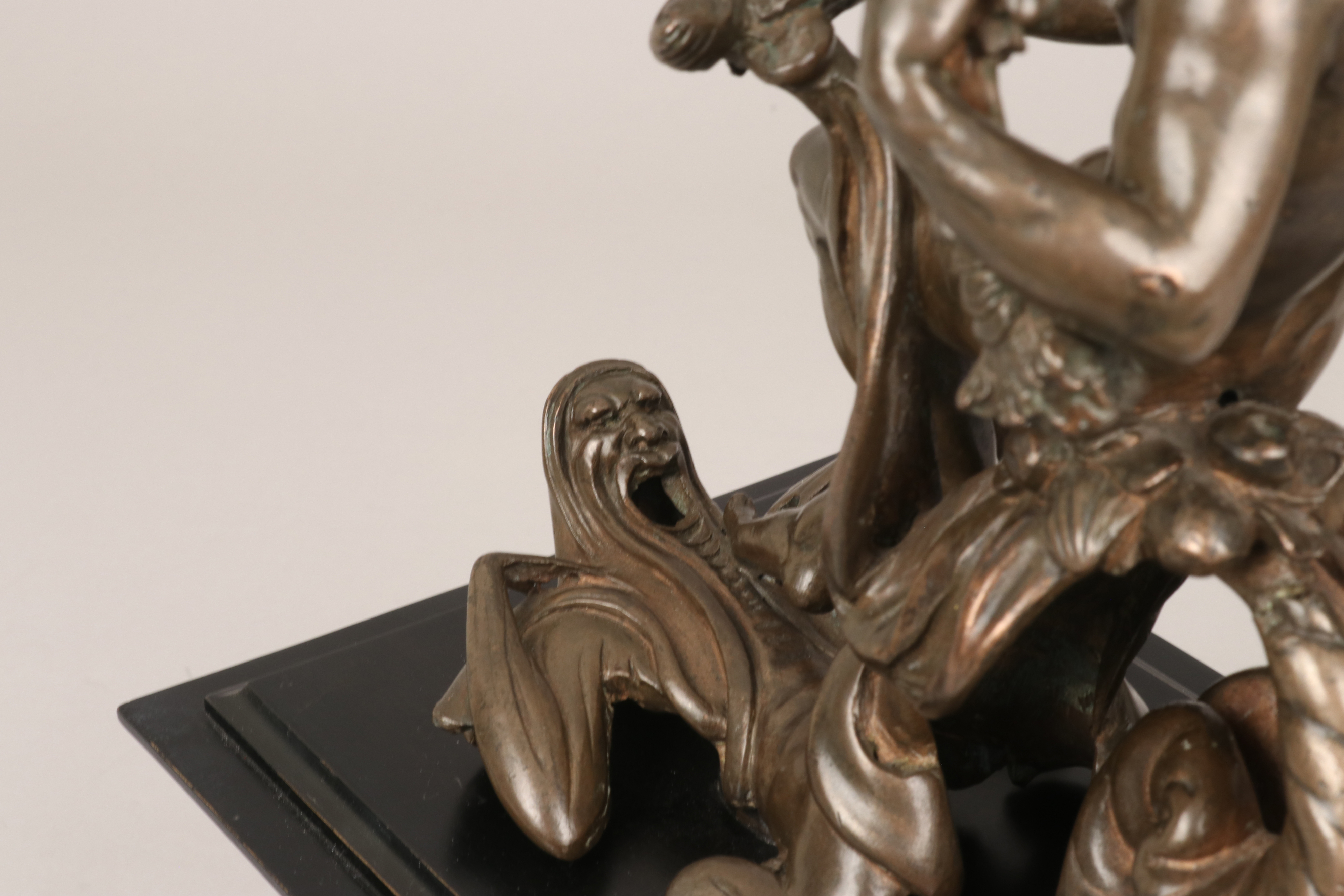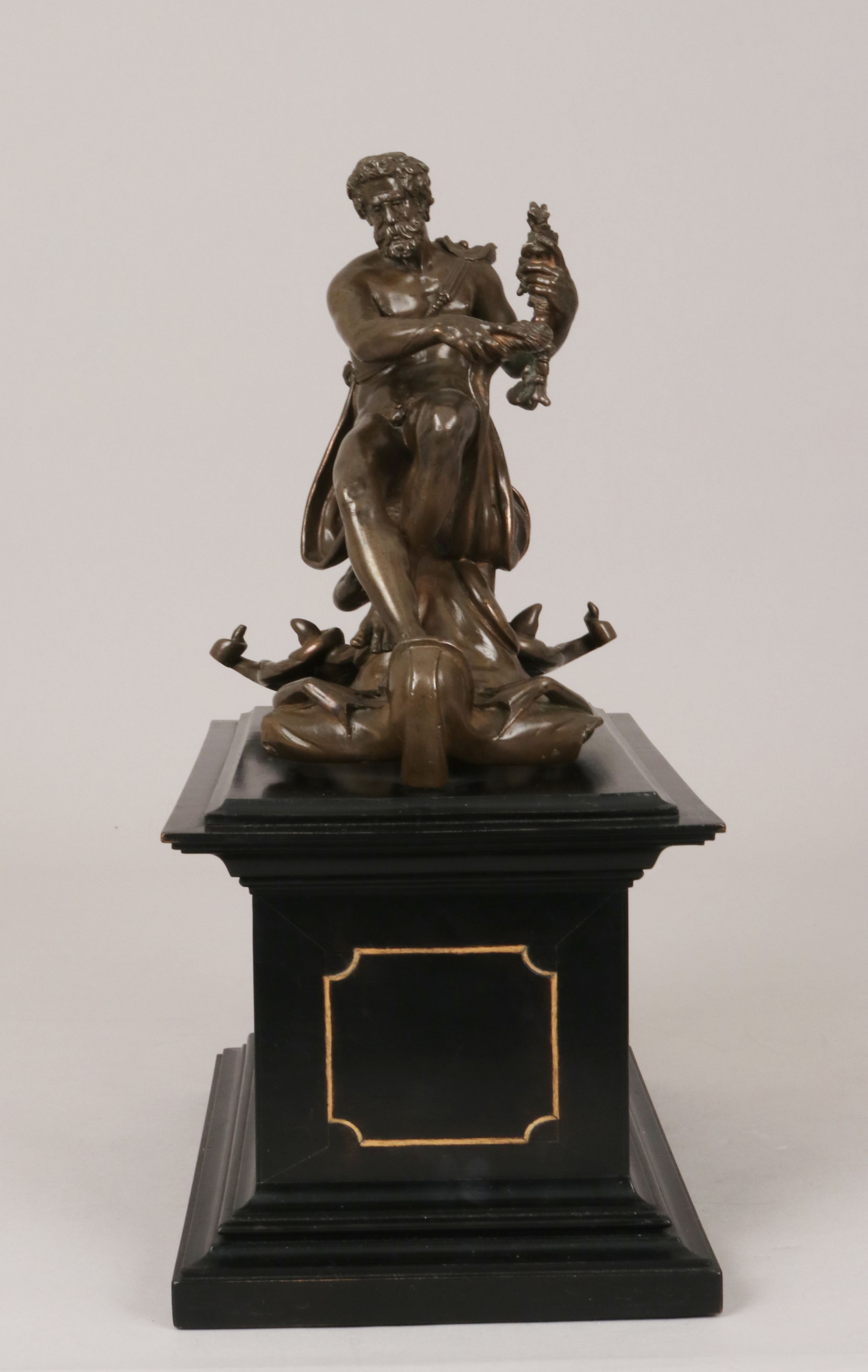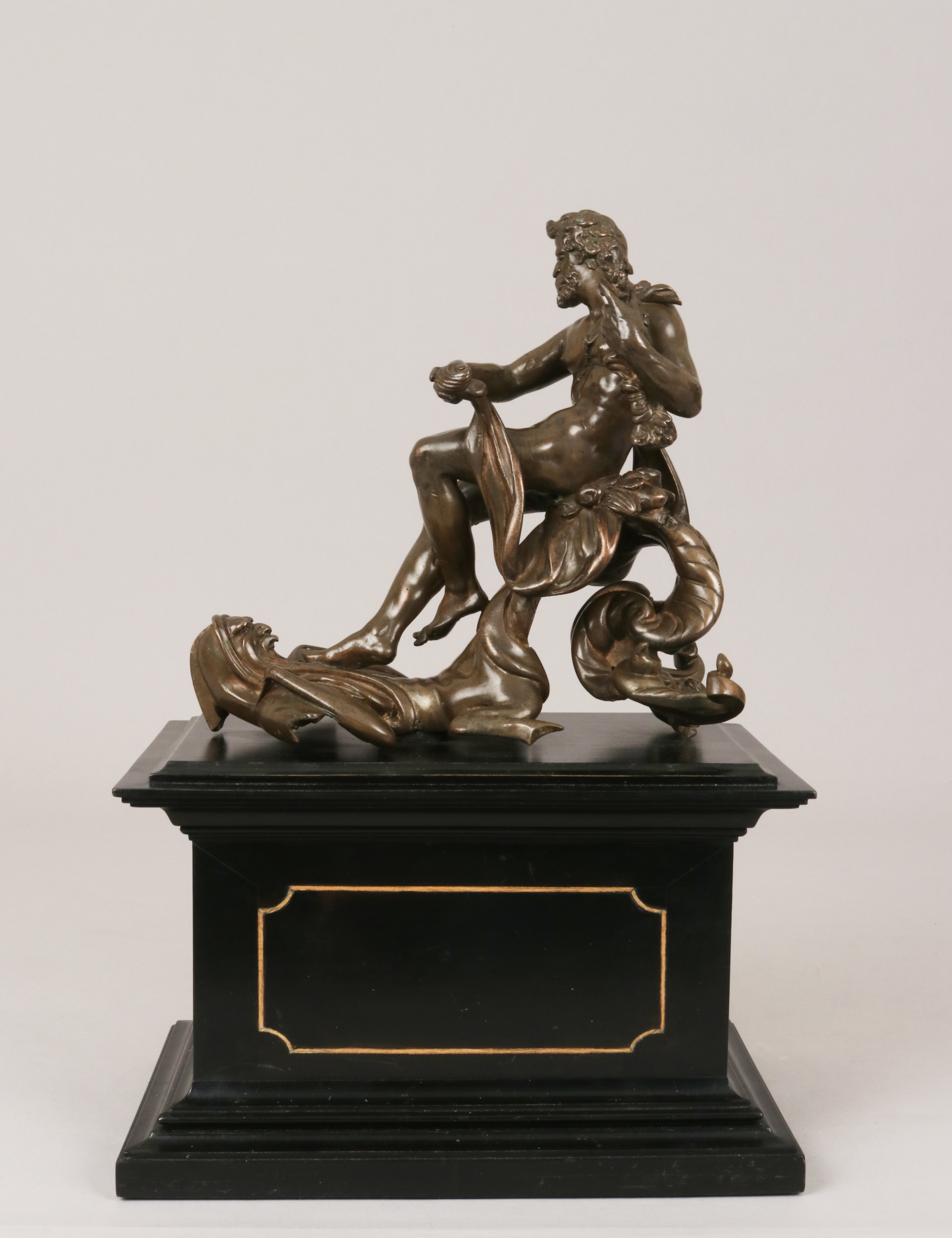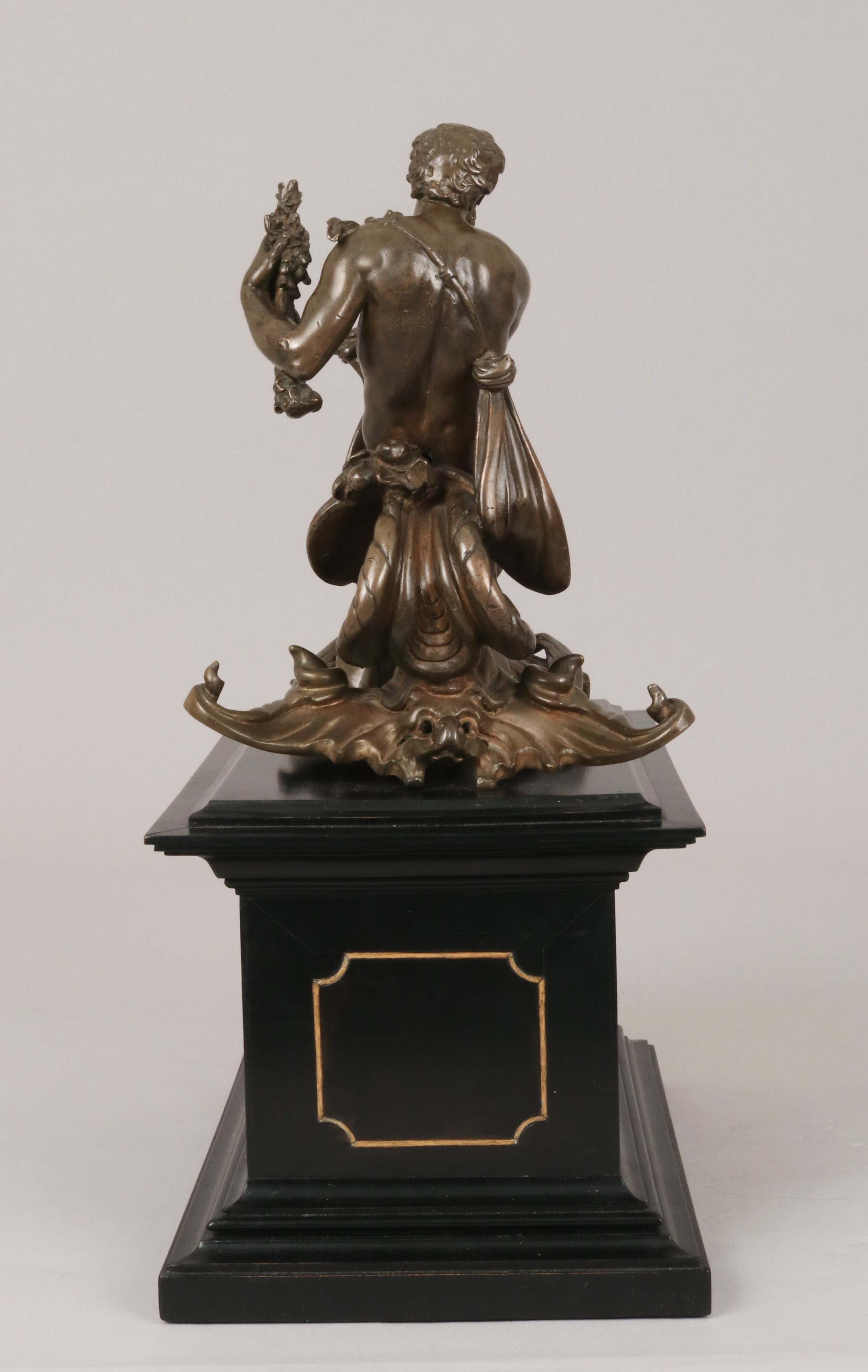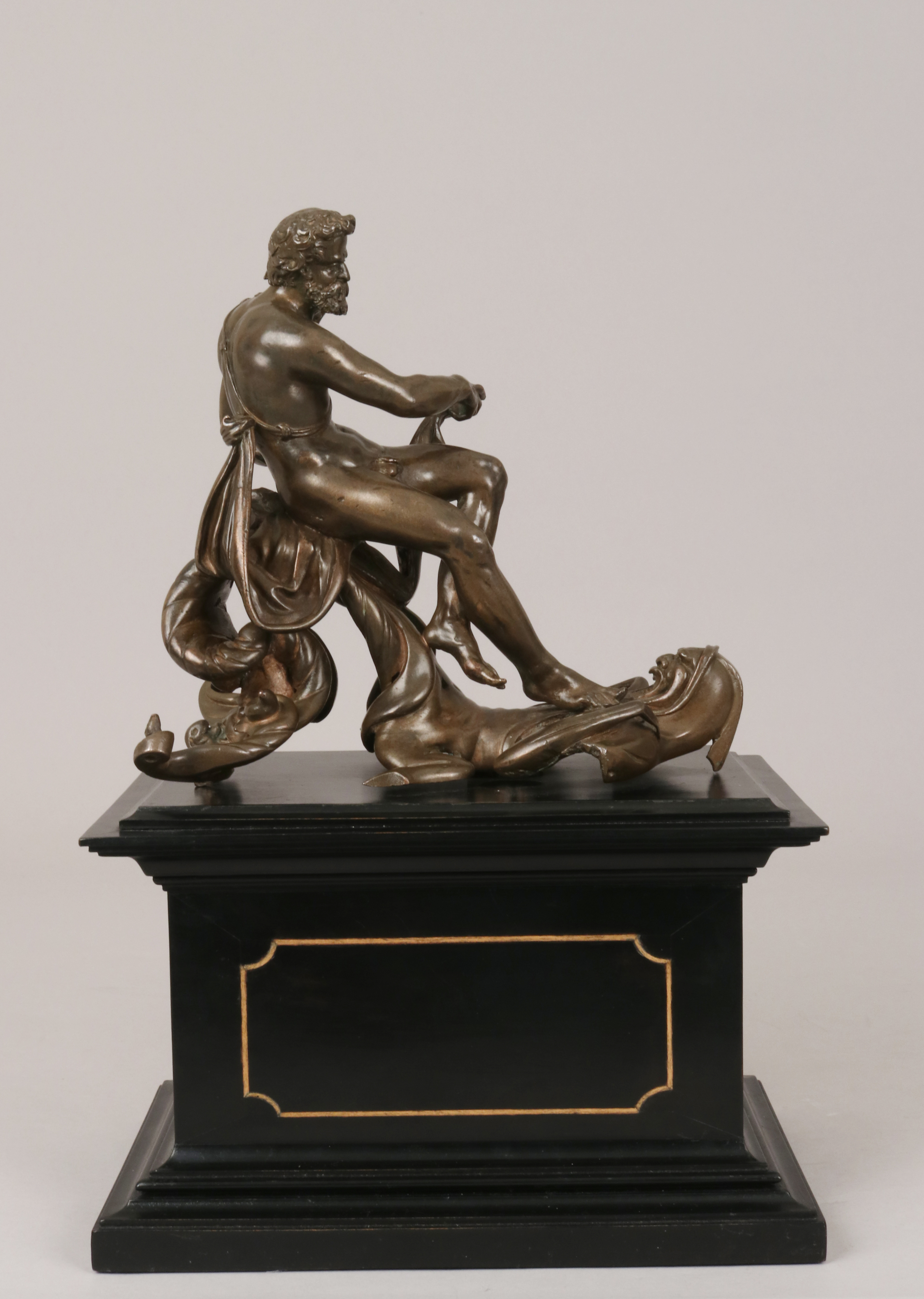Hercules Overcoming Nereus On His Way to the Garden of the Hesprides
Attributed to Adriaen de Vries Netherlandish
Not on view
This unique northern Renaissance bronze figure group embodies the marriage between fantastic invention and daring technique that is the hallmark of the sculpture and goldsmiths’ work created at the court of Emperor Rudolf II in Prague in the early 17th century. The subject is likely a rare depiction from the Twelve Labors of Hercules showing the mythological hero seated in triumph upon the shape-shifting sea god Nereus portrayed in the guise of a hooded, bat-winged monster that curls, unfolds, and changes its form even in defeat. The figure group is attributed to the sculptor and bronze founder, Adriaen de Vries (1556–1626) who boldly cast it in a single pour and exploited the undulating movements of molten bronze to evoke the protean transformations of Nereus. De Vries, who became sculptor to Rudolf II in 1602 was joined at court in 1607 by Paulus van Vianen (1570–1614), a goldsmith instrumental in developing the “auricular,” style that derives its name from the organic, fluid, and layered forms that are also characteristic of De Vries’s bronze composition. The Hercules and Nereus has the scale and affective power of an independent bronze statuette, but it originally may have been made as part of a larger decorative ensemble.
Due to rights restrictions, this image cannot be enlarged, viewed at full screen, or downloaded.
This artwork is meant to be viewed from right to left. Scroll left to view more.


